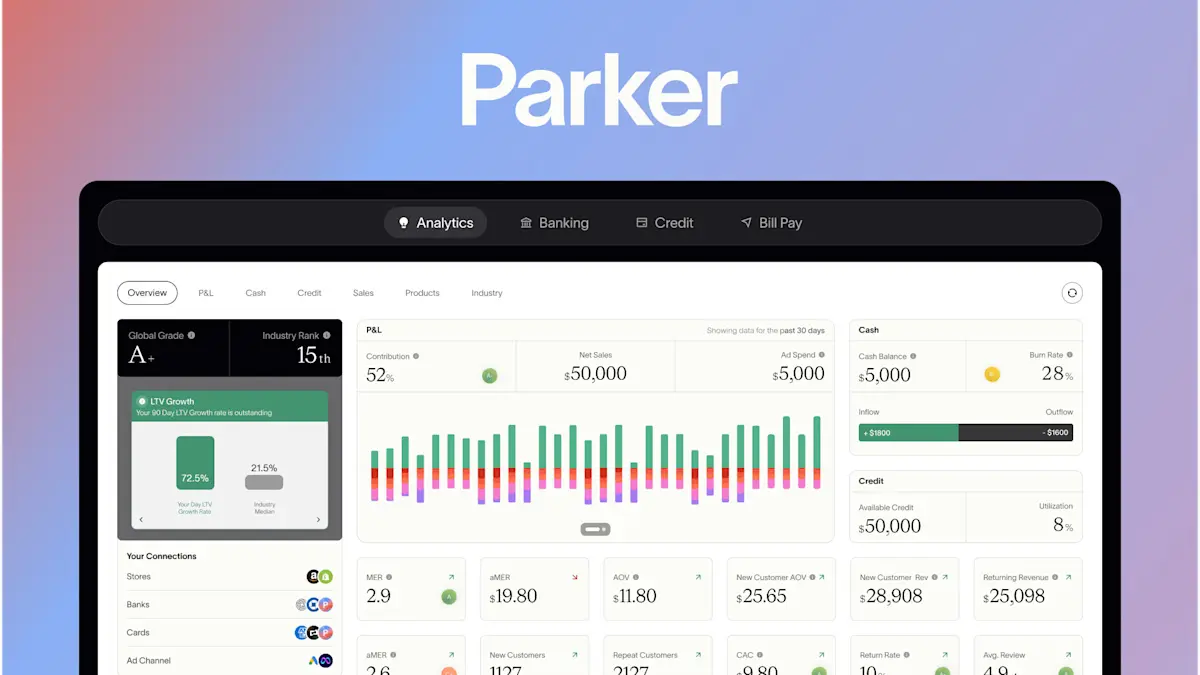Letter to a Fundraising Founder

If you are reading this, you want to raise money for your startup. Or you’ve raised some money, but now you need a little (or a lot) more. Or you don’t need to raise just this moment, but think you will sometime in the future.
You have likely also realized that building a great product, and raising money to fund the continued vision of that product, are two completely different sets of skills.
I realized it when I was coding 16-plus hours a day, working on the beginnings of what would eventually turn into Parker, and decided I wanted to apply to YC—and learned that crafting a pitch for investors was worlds apart from building a startup heads-down.
Fortunately, we got into YC.
Since then, I’ve raised more than $100M (some venture capital, some debt) and have learned a number of lessons I wish I’d known earlier. Below, I’ll do my best to cut through the fundraising noise—you’ve probably read lots of fluff—to give you advice I think will help you raise.
How we raised for Parker (for the first time)
Y Combinator was the first investor in Parker.
Getting into YC is seen as a kind of gold stamp in startup land. YC’s reputation for selectivity and churning out quality companies gave Parker a strong baseline of social proof that made us more legitimate in the eyes of potential investors. It gave us a seat at the table.
Like many, though, we didn’t think we could get in.
Prior to applying for YC, my co-founder and I felt like outsiders. I’d been a devout Paul Graham disciple for a while, and consumed all the YC content I could find, but until our acceptance it still felt worlds away.
In hindsight, there were a few things we did in our application that contributed to our success:
- Understand their culture and values. YC has a distinct philosophical approach to startup-building. Understanding and weaving this into the way you write your application goes a long way. This principle is the same no matter who you’re pitching—understand who they are and what they look for. Pitch them in in a way that matches their principles.
- Pro Tip: Paul Graham’s essays and YC’s Youtube content library are both goldmines of information.
- Be clear, concise, and technically sound. Don’t dilute your idea with jargon. Your application should say exactly what you’re building and communicate that you have the technical expertise to execute effectively.
- Be ambitious. Communicate not just what your product is today, but also exactly how you think it will become a world-changing giant of a company.
At the early stages of fundraising, that third bullet is arguably the most important. For your investors to see your ambition as achievable, you have to tell them a compelling story.
The rest of this essay includes advice for fundraising at all earlier stages—not just YC.
How to tell your story
Very, very early on, the biggest thing that matters is the story. Early-stage investing is often based more on a gut check than any objective analysis of a company. Which means it’s up to you to craft a narrative compelling enough that it makes investors feel something.
Tell them why this little tiny thing you’re working on will eventually become the next Stripe or Airbnb. Tell them how you plan to get there. And tell them you want them along for the ride.
When I was in YC, I noticed that it wasn't the companies that had the best traction or the flashiest numbers that fundraised. The founders who got funding were the ones who were best at crafting a narrative around what they were building. This is hard, because storytelling is a different skillset than many of the other things you need to build a company.
So, how do you craft that story? Every startup's high level narrative is completely unique, but I can offer a few tactical insights.
Traction is a prerequisite.
As important as storytelling is, I must note that it’s only worth focusing on after you have a baseline level of product quality and traction. Once you’ve made progress in building something valuable and getting customers who love it, you can focus on your narrative. If you haven’t made it that far yet, start by focusing on generating enough progress that you have real evidence to make your story compelling. The best company stories feel more like fact than fiction.
Growth rate > MRR.
Your trajectory matters more than your revenue number. Sure, you need a good product and customers who get value from it. But your actual MRR number isn’t nearly as important as how quickly you’re growing. Investors will look at growth rate as an indicator of future potential and that’s what’s most important here.
Prove you’re someone who can get things done.
Imagine 2 founders:
- “The Traditional”: senior level Google employee who’s worked there for 15 years.
- “The Hacker”: A 19-year old dropout who’s built a $50k/month business.
You might think there’s an ideal “founder archetype” that VCs look for, but the reality is founders come from many different backgrounds. What matters most is to play to your strengths in the way you pitch yourself.
A younger scrappier founder should emphasize their ability to take risks and find an unconventional path to success. This is something a bigtech lifer hasn’t done.
An industry veteran, on the other hand, should highlight their deep, earned knowledge of the space they’re working in. They have experience a younger founder likely can’t catch up to.
If you don’t have the big tech stamp of approval; that’s great, use it! If not, don’t worry. Many different kinds of founders can raise if they position themselves properly by highlighting their strong suits.
Use ambition as a metric. Your idea isn’t just what your business is made of, it’s also a signal of your ambition. It takes a certain level of moxie to pick a difficult, world-changing idea to work on. A founder working on building rockets from scratch has to be at least a little crazy. VCs love that.
Outsized outcomes are the name of the game for venture investors, so communicating that you plan to swing for the fences is as important as anything else.
You need credibility—as much as you can pull together.
Founders often fail at fundraising because they don’t establish themselves as the “right person” to build their business. This is a concept referred to as Founder-Market Fit.
If you studied biology in college and your resume is filled with short stints at climate startups, for example, your decision to start a quantum computing startup would seem confusing to investors.
To establish credibility, you should tell a compelling story about:
- What led you to start this business in particular
- The experiences you’ve had that make you an expert on this niche
- Why you are particularly passionate about it.
When I was pitching Parker to investors, I highlighted my past track record of building e-commerce brands from scratch. I’d tried every product in the niche (the good, the bad, the ugly) and I understood my customers’ pain points firsthand. After all, I used to be right in their shoes.
Practical advice for pitching investors
Many founders believe the false mantra “build it and they will come”. Aside from the occasional piece of cold inbound from investors, this couldn’t be further from the truth. In truth, fundraising is something of a numbers game. Many of today’s most iconic unicorns spent years eating rejections before they got funding. Airbnb was famously turned down by nearly every investor they met with until a cereal box publicity stunt helped get them into YC. Parker had similar struggles: despite closing a bit of angel money right after YC, it took us 2 more years after that to raise our seed round. To this day, we still deal with rejection from investors.
A no from a single investor isn’t necessarily an indicator that you won’t raise. It just means you should seek out more investors to talk to. Here are a couple core pieces of advice:
Make # of conversations with investors a KPI.
Reach out. Pitch what you’re working on. Ask for feedback. Rinse. Repeat.
Things may start out slowly. Don’t fret. Stay focused on driving your KPI up and you’ll inevitably get better at pitching and gather steam.
One of the single best pieces of fundraising advice I got was from my friend Patrick. He told me that early on what matters most is simply volume of pitching. Practicing as often as possible and learning what works when talking to investors through trial and error is one of the best things you can do for yourself during this process.
Get warm intros.
Leverage your network of founders. If they’ve raised money from an investor you’d like to talk to, reach out and ask them for an intro. Going through a warm connection will make investors more receptive. When you can’t get to an investor through a warm intro,
Reach out cold.
Great cold outreach starts with a strong blurb. Think of this as a 2-3 sentence distillation of everything that’s most exciting about your company. It should include what you’re building, how big it could get, and any social proof you can show (existing investors, fancy founder credentials, and more).
For example:
“Parker is building a financial platform for ecommerce companies. We’re currently serving __ customers and growing __% YoY while being backed by Y Combinator & other investors.”
The #1 mistake people make when cold emailing investors is diluting their message with fluff and buzzwords. Be very explicit about what you’re building.
Instead of -> “We’re revolutionizing the car industry”
Say -> “Tesla is building electric vehicles”
Here’s another example. Here’s how I’d go about pitching Google, many years ago, with no fluff.
"Google is building a search engine. Type what you’re looking for into a search bar and we’ll give you high quality results, fast.”
Remember: with a blurb, you want to quickly educate and explain what your business actually is. Blurbs are not about using buzzwords and self-aggrandizing language to sell yourself. Investors just want to know what you’re doing and how well it’s working.
Create leverage.
As you talk to more investors, you’ll inevitably gather more interest. Beyond helping you close your round, this will also give you leverage that’ll make it easier to get stronger terms from everyone who participates.
Don’t be afraid to share data, but don’t share too quickly.
When talking to investors, don’t reveal all your numbers up front. Focus more on the narrative you’ve crafted and pepper in only the most relevant high level metrics. Don’t be secretive If investors ask for deeper cohort data, but there’s no need to spill everything from the jump.
On choosing good investors
Fundraising is a two way street. You should focus just as much on evaluating your investors as they focus on evaluating you. It’s easy to forget this when you’re in the throes of it—it can be tempting to take a check from anyone who’ll write one, but that usually backfires.
How can you tell if an investor is right for you? It’s tough to say from just a few short meetings. When you’re talking to them, take note of whether they’re put in work to understand your company and your market. Pay attention to whether they ask basic cookie cutter questions or if they’re deeply curious and thoughtful about your business.
You can also pull on references. Ask founders in their portfolio what their experience working with that investor has been like. An investor is a crucial partner and the best ones add value far beyond just capital so choose wisely.
One key caveat here: beggars can’t be choosers. Many founders get too focused on prestige when talking to investors and some even think about turning down money if it doesn’t come from a Tier 1 fund. Prestige can be valuable, but be realistic. Your choices are limited to the funds offering you a term sheet, so don’t be too picky. Logo-chasing shouldn’t stop you from closing your round.
What kind of investor do you want? Early stage venture capital focuses on equity investments, but in the later stages of a company, debt financing can become a feasible option. Raising debt is more transactional and data driven. If your numbers are good and your risk profile is low, you can raise debt, but this comes with shorter term pressure to generate cash flow and pay your investors back. Raising equity is much more of a dance; telling a story and building relationships with investors.
Whatever you choose, remember that raising funding is only a small part of building a business. Once you’re done it’s time to go back to doing what matters: building something that creates value for your customers.
I hope incorporating this advice into your fundraising process sets you up for success. At the very least, you’ll avoid the mistakes we made fundraising for Parker.
Now go forth and prosper.
Related Articles
Ready to Join the Financial Revolution?





